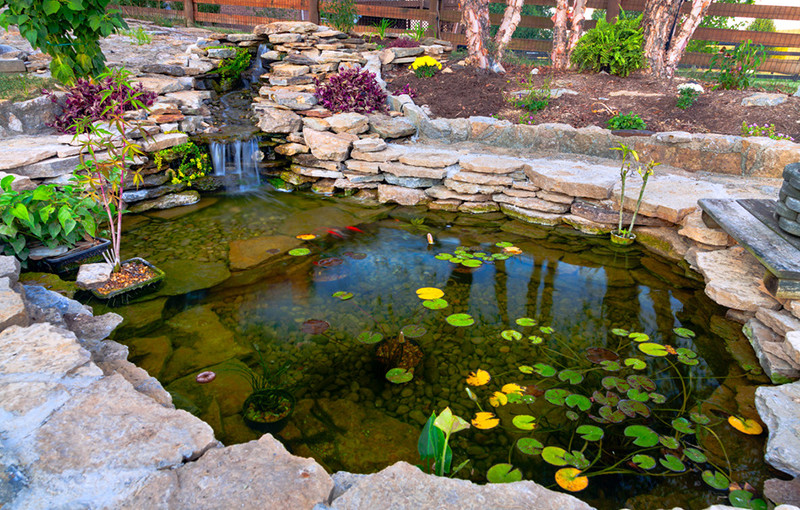
The humble sump pump – odds are, you never think about it, that is unless it stops working. Then it becomes the most important thing on your mind. You probably know that a sump pump’s primary job is to keep your basement water-free. They’re typically submerged in a shallow well – called a sump basin – in the lowest spot of the area. As the outside groundwater seeps downward through drains or by natural flow, it’s directed to the crock. When the water rises to a certain level, a float switch triggers the sump pump to activate, pumping the water through drains away from the house, leaving you with a dry, livable area.
What you may not know is that the humble sump pump can also be a versatile workhorse. It can be used for a variety of around-the-house projects that involve draining or pumping, as long as the water is relatively clean. Sump pumps are relatively inexpensive, and it’s always a good idea to have a second one as a backup. We found 6 surprising alternative uses for that backup sump pump that can make difficult jobs surprisingly easy.
#1 Draining the Hot Water Tank
Plumbing pros recommend you occasionally drain your hot water tank to remove the sediment that can accumulate at the bottom. This is a perfect alternative use for your primary sump pump. Simply attach a hose to the drain at the base of your hot water tank. Open the drain and let the water flow right into the basin. The sump pump will pump the water out of your house, and you won’t be left with messy cleanup. One word of caution: This is hot water. Be careful and avoid direct contact.
#2 Draining a Hot Tub
If you own a hot tub, you know you have to occasionally drain and clean it. Letting the water drain out takes time – a lot of time. But attach that backup sump pump to a garden hose, let it sink to the bottom of the hot tub, and watch it pump out the water in minutes. The pump may leave a little water left in the bottom – use a wet/dry vacuum and rags to remove the residue. Pro tip: there can be strong chemicals in your tub water, so avoid draining it into your yard or garden. Try a plastic tub instead.
#3 Draining a Pool or Pool Cover
If you own a pool, draining the water off your pool cover or draining the pool itself is a slow process. A sump pump with an attached hose can speed things up. To keep the pump from clogging up with leaves, use your pool skimmer to remove as much debris as possible before you pump.
#4 Keeping Low Spots in Your Yard Dry
Keeping extremely low spots in your yard dry – especially during the rainy months – can be a losing battle. If you have a place where you can drain off the excess water, you can create an outdoor sump pump system. You’ll need to install a sump basin in the lowest part of your yard, and line it with cement blocks and/or a sump crock. Top it off with a cover that lets the water pour in, but keeps the debris out. Run a hose to your desired drainage area or, if it’s a frequent problem, consider installing a French drain.
#5 Making a Pond Fountain or Waterfall
Small ponds are becoming extremely popular in gardens, and keeping the water moving and aerated is critical for keeping them healthy. There are pumps specifically made to aerate ponds, but they’re usually quite pricey. However, a sump pump makes a great alternative. You’ll need to keep debris from entering the pump, but a little ingenuity can go a long way toward creating a beautiful water feature. Note that sump pumps don’t typically have the durability and longevity as traditional pond pumps, so you’ll need to limit their run-time. Also, expect to replace them every few years.
#6 Draining a Livestock Tank
Most of you won’t need to use this tip, but it’s still a clever alternative use for a sump pump. For small hobby farms, keeping fresh water in a barn tank can be an issue. Small barns often just have dirt floors without drainage systems, so just opening the drain valve and letting the water flow out isn’t an option. A sump pump with an attached hose can let you drain the water away from the barn, keeping the floor mud free!
#7 Don’t Forget, Safety First!
This isn’t really an alternative use for a sump pump, but it’s important to note that safety always comes first. You’re working with water and electricity, so be mindful of your surroundings. Keep the plug and outlet dry and make sure the electrical cord is intact. Also, when draining water away from a source, know what’s in the water and how it can impact the surrounding environment.
Worried about primary sump pump failure? Team EverDry can install a battery backup to keep your basement or crawl space dry, whatever the weather. Contact us online or give us a call at (419) 841-6055 to schedule a free 20-point basement inspection!
Stay connected with EverDry Toledo on Social Media to learn more home maintenance tips and tricks!
Facebook | Twitter | Google+ | Houzz







